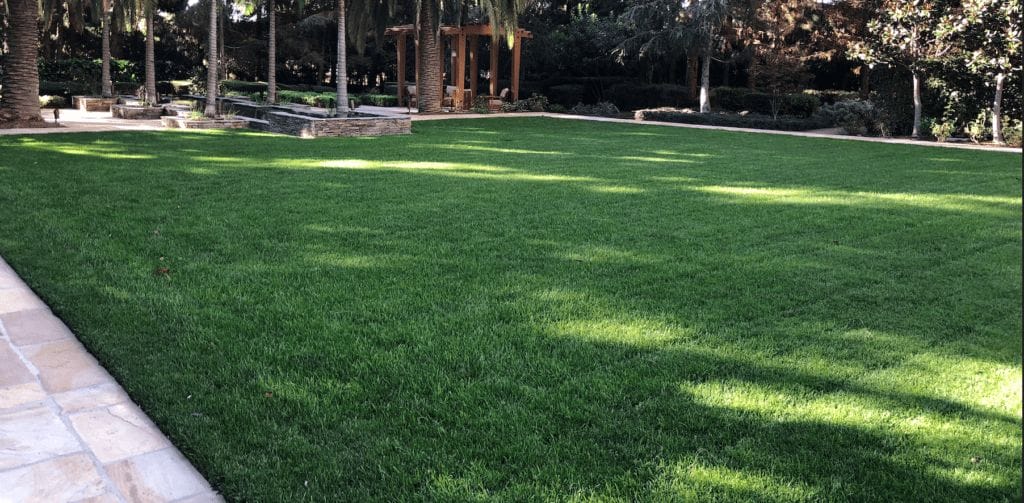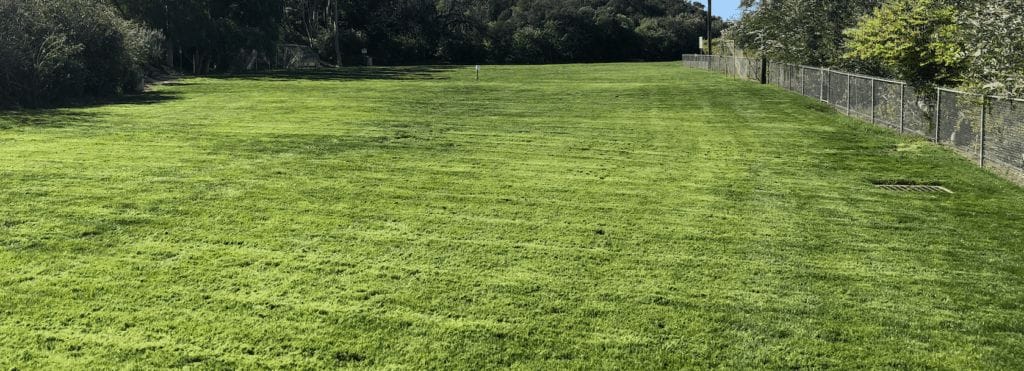Imagine your lawn as a piece of machinery, after an accrued usage over time, there are some maintenance and upkeep requirements that are required; like changing the oil, rotating the worn parts, oiling the frictional parts. When we talk about the lawn, one of the most important maintenance requirement is lawn aeration. Your lawn must properly aerated and breathable. Each time you step your lawn, mow your lawn and allow the kids to run around in the yard, the turf becomes a little compact.
As a homeowner, periodic lawn aeration is very pertinent for a healthy and disease-free lawn. To achieve and maintain a beautiful lawn, basic lawn care practices should be employed, these include proper mowing, fertilizing, and watering. Ensuring that nutrients reach the soil beneath the grass is very important. Why aeration is important is that it allows air, water, and other nutrients to penetrate the grown grass or a thatched lawn.

What is Aeration?
Aeration includes perforating the soil with little holes so that air, water, and other nutrients can penetrate the grassroots. This, in turn, allows the root to go deep and then becomes stronger for a vibrant and active grass. Getting rid of soil compaction is the main reason for aerating. Compacted soils are made up of too many solid particles contained in a certain volume, this prevents proper air circulation, water, and nutrients within the soil deep.
Collective lawn thatch and accumulated organic debris buried under the grass usually deprive the roots of these vital elements.
Importance of Lawn Aeration:
Turf health
One of the best benefits of lawn aeration is that it improves the overall health of your grass and lawn. Core aeration is important in order to allow the root zone to get greater access to air, water, and other nutrients. It is the access to air, water, and nutrients that improves the health of your turf. It further results in deeper and penetrative grassroots.
Reduces thatch build-up
The accumulation of thatch and dead grass debris on your lawn results, to a thick layer that deprives your grass of necessary rain and nutrients. Aeration helps manage all that has accrued by a means of introducing thatch-decomposing microorganisms from the soil to the thatch layer top.
Relieves soil compaction
Compacted soil doesn’t allow air, water, and fertilizer to reach your lawn’s root system, it causes dead spots and patches. The soil density is decreased during the aeration process relieving compaction.
pH modification
Application of sulfur or lime after core aeration promotes soil profile pH change deep down the soil. This facilitates the penetration of nutrients deep into the root zone and makes it available to the turf.
Water runoff and puddling deduction
If you discover that your yard experiences runoff or puddling problems after it rains, you should try aeration.
When to Aerate your Lawn
The most suitable time for aeration is during the season of growth that is when the grass can heal and fill in any opening in areas where soil plugs have been removed. The best practice is that you should aerate your lawn with cool-season grass in the early spring or fall and in the late spring, warm-season grass.
How often should you aerate your soil?
The frequency of your lawn aeration largely depends on the type of grass and the soil type you have on your lawn. Lawn aeration should take place just before the active growing season. You also need to identify the species of your grass. Usually, warm-season grasses commence their growing period at the start of the summer while cool-season grasses, on the other hand, commence their growing period at the very end of the summer. You can obtain this information by making a quick call to a local lawn service company.
Clay-based lawns should ideally be aerated twice a year. For the Sand-based lawns, you can just opt for the annual lawn aeration. This is only a guideline it’s not a manual, your lawn aeration typically revolves around how much you use your lawn.
If you are not sure how far your grassroots extend, you can just pull out a small section of your lawn to see. If the roots of the grass go down by only an inch or two aerating is probably a good idea at that time.
It is important for your lawn to have loose soil and this is for several good reasons. Important nutrients, water, pesticides, and fertilizer will penetrate the loose soil rather easily. In addition, grassroots will easily go down into the soil to extract these nutrients. Aerated lawns promote a healthy population of microorganisms that breakdown the lawn thatch. Layers that are left unchecked and spongy layers of thatch usually block water and nutrients from reaching your lawn, these overall deprivation leaves your grass more vulnerable to diseases and pests. A good-looking lawn is pleasing to the eye, soon everyone in the neighborhood might start to describe their homes like the one close to the beautiful lawn.






